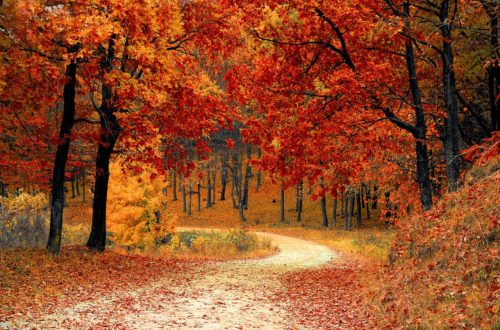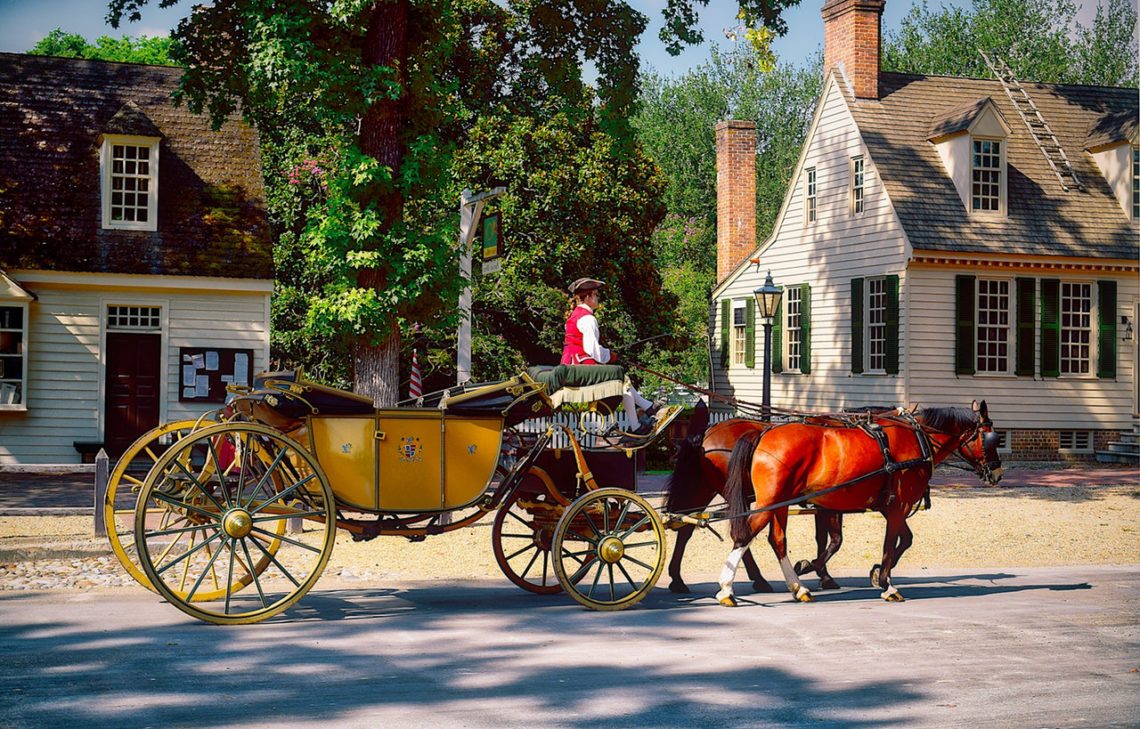
Colonial Williamsburg: A Step Back in Time
What and Where is Colonial Williamsburg?
Many years ago, a friend had just returned from a conference in Colonial Williamsburg. At the time, I had never heard of the place, but I loved the name – Williamsburg. He said it was a lovely place and well-worth a visit. A few months later, a colleague and I found ourselves on a flight to Washington D.C. for a conference. When the conference ended, we couldn’t resist a side trip to Colonial Williamsburg. I am so very glad we did.
Colonial Williamsburg is 153 miles south of Washington D.C. – a two-and-a-half hour drive on the I-95 South to the I-295 to the I-64 East. You can also fly into the Williamsburg area. There are three airports servicing Williamsburg: Newport News, Norfolk, or Richmond. I have both driven from DC and flown into Richmond, which was a 45 mile drive into the Williamsburg area from there.
Driving either from DC or Richmond is a special treat during fall foliage when the leaves are turning. Edging along the I-64 on both sides are rows and rows of thick forest trees. The colors of the leaves in autumn are magnificent. This landscape continues on for miles. When I saw the Colonial Williamsburg exit, I was filled with excitement. Driving into town, we passed the Visitor Center, but I didn’t want to stop, it was dinnertime and I wanted to check into our hotel.
The Williamsburg Inn
The Williamsburg Inn is my favorite place to stay when I am in town. It is stunning. Once you’ve stayed here, you won’t want to stay anywhere else. This 5-star luxury hotel is gorgeous in and out. Queens, Kings, Presidents, and heads of state have all stayed here. Above all, Queen Elizabeth and Prince Philip visited in 1957 and in 2007. As you walk into the lobby, you are taken back by the coziness and charm of it all – fires burning in the fireplaces, beautiful period furniture, a stunning view out into the lovely courtyard. As a result, I can’t get enough of this place. They even have a golf course and a spa.
The guest rooms are equally as beautiful. Fine furnishings in Regency style make you never want to leave your room. The shower curtain in our rooms were actually made out of lace. The bedspread on my bed was so stunning that when I arrived home, I called the Inn and asked if they sold it in one of their shops. They said yes and the cost was $8000. Even though it was made out of silk and the color was teal, one of my favorites, with inlaid gold thread bumblebees, I had to unfortunately pass it up, I had never seen a spread so beautiful.
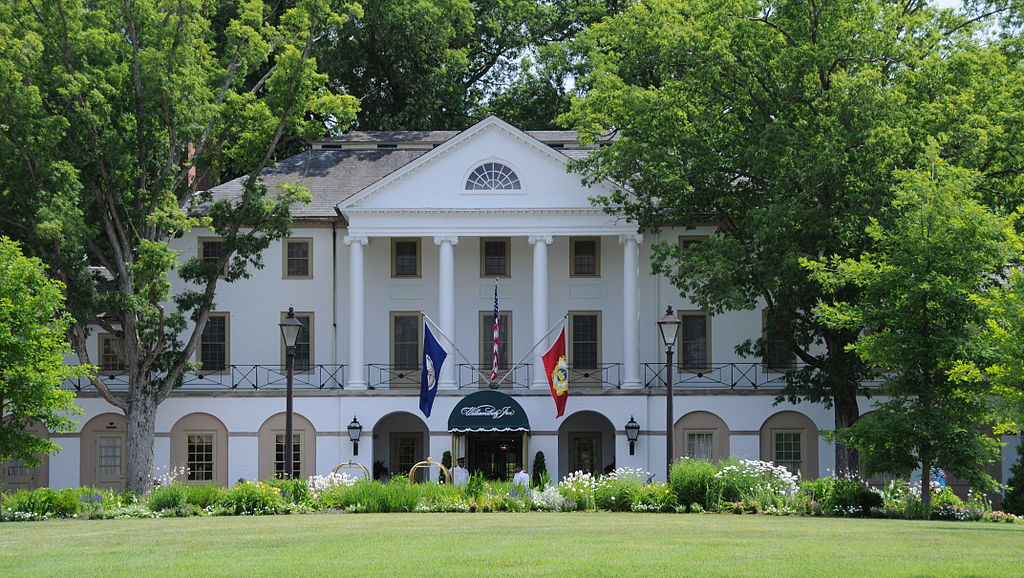
The food at the Inn was outstanding. I have food issues and I was able to meet with the Head Chef to plan my meals during my stay. This was very impressive. Wearing the tallest white toque I had ever seen, she came out during each meal to make sure the food was to my satisfaction. Amazing service! She whipped up the best-tasting yams with whipped cream and maple syrup I have ever tasted.
The Williamsburg Lodge
Another hotel worth a mention is The Williamsburg Lodge, which is just a hop, skip, and a jump down the way from the Inn. I have stayed here on a visit when the Inn was full. It is not as expensive or as lush as the Inn, but is a very pleasant stay. It also has a very cozy and warm atmosphere. I was thrilled one evening. As I was eating my dinner, I glanced across the way at another table, and Joe Pesci, of Home Alone and My Cousin Vinny fame, was enjoying his dinner.
Colonial Williamsburg: A Step Back in Time
The House of Burgesses
Capturing life in the 18th century, Colonial Williamsburg is the world’s largest living history museum, encompassing 301 acres. It truly is a step back in time. This is where the idea of our nation was defined. Thomas Jefferson, James Madison, George Washington, Patrick Henry, all the forefathers that we have grown to admire shaped our nation from The House of Burgesses here in Colonial Williamsburg. Unbeknownst to me until my second visit, I am proud to say my 9th and 10th great-grandfathers, Thomas Jordan and Samuel Silas Jordan also served in The House of Burgesses and helped shape this country. Therefore, Colonial Williamsburg holds a very special place in my heart. The House of Burgesses is housed in the Capitol Building and when you walk inside, you can just imagine the orations and discussions that went on here.
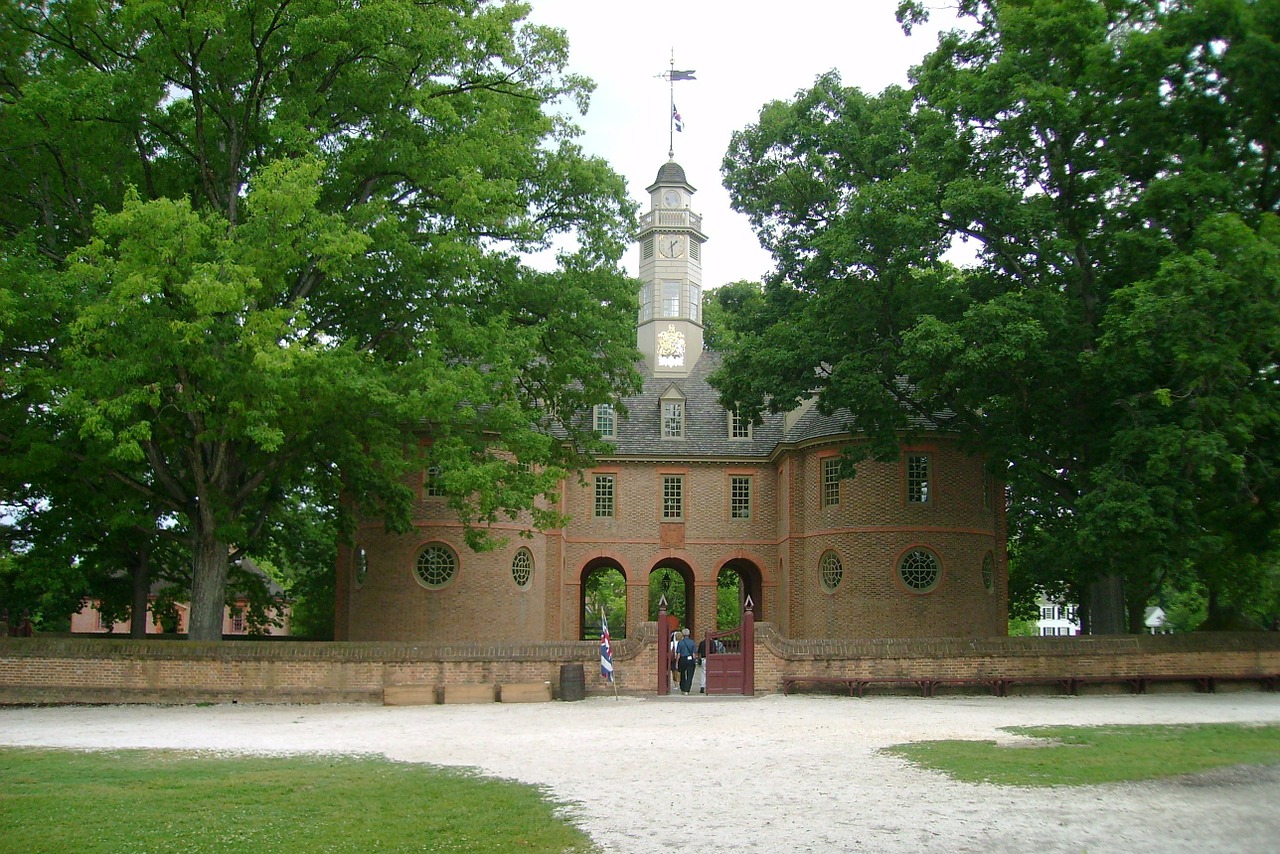
The Duke of Gloucester Street: The East End
The Duke of Gloucester Street is the main street of town. It is a mile-long road and 99 feet wide. It begins at the Capitol Building to the East and ends at the College of William and Mary to the West. This is where all the action is. Carriages, horses, and wagons can be seen making their way down the road. No automobile traffic is allowed here. I took a carriage ride all through town and I felt what it must have been like to live here during the Revolutionary War era. I got chills as I was walking down The Duke of Gloucester Street to think that I was walking on the same gravel road as Thomas Jefferson, George Washington, and my great-grandfathers did.
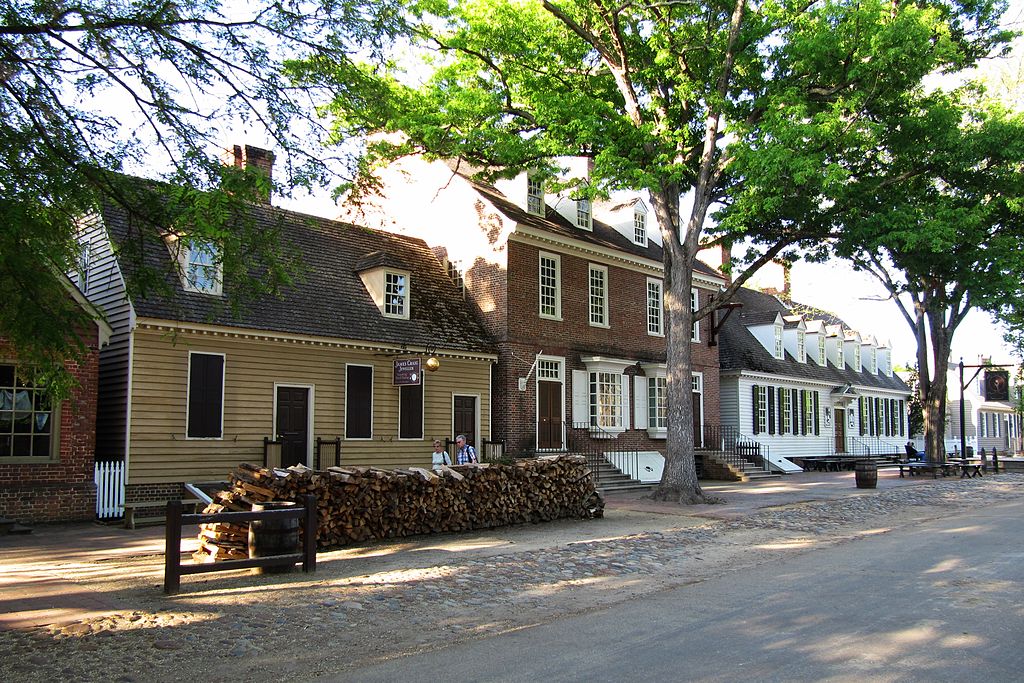
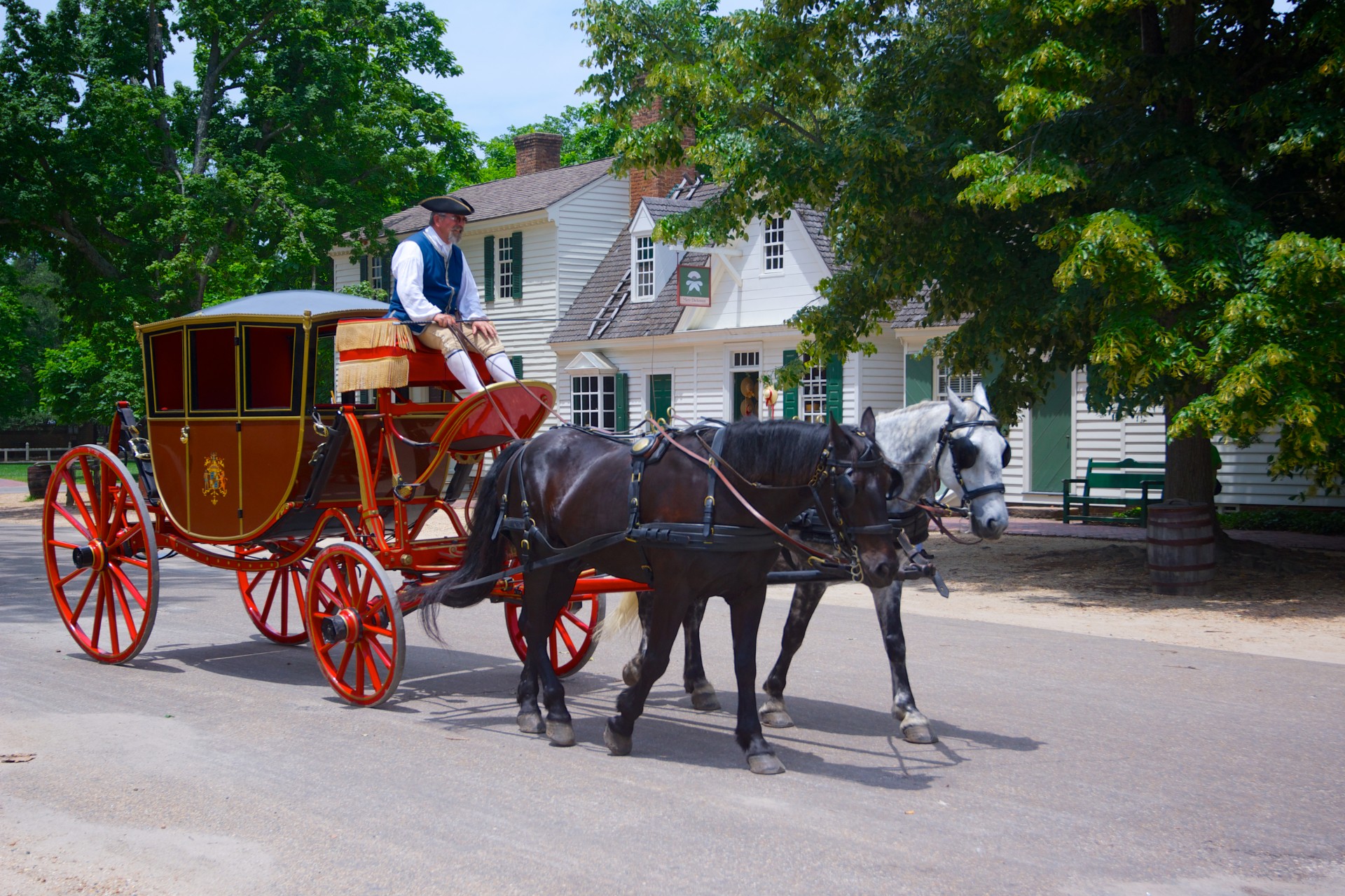
On the east end of the Duke of Gloucester street is what I would consider the historic part of the mile-long street. It begins at Henry Street to the west and ends at Waller Street. Wooden clapboard structures, with shuttered windows and dormers house many of the trade shops and taverns, such as The Apothecary, The Silversmith shop, the Wigmaker shop, The Blacksmith’s Shop, Raleigh’s Tavern, Christiana Campbell’s Tavern, and The King Arms Tavern, just to name a few.
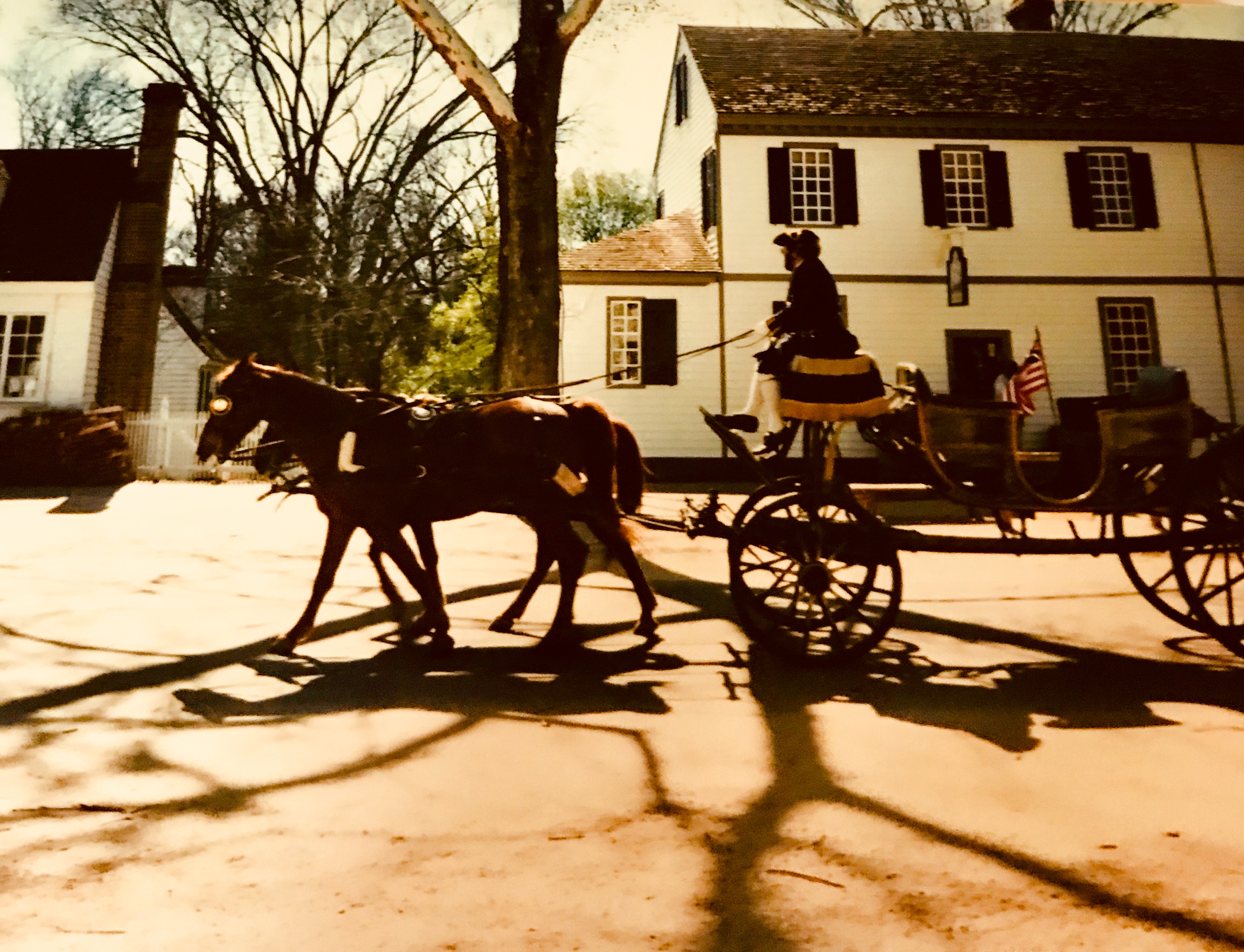
Market Square, The Courthouse, and The Magazine
Market Square is also on the East end of the Duke of Gloucester Street, as you move towards the West end. This is where the Courthouse and The Magazine are. The Courthouse announced the end of the Revolutionary War. The Confederates used it as a hospital during the Civil War. Debtors disputes and slave grievances were often heard here. When sentenced, the guilty didn’t have far to go. The whipping post and public stocks were a few steps outside the courthouse. The arms and munitions were kept in the Magazine for the colony’s defense. I took a tour of The Magazine and was able to see some of the arms that were on display. It was quite impressive. Market Square is also the center of activity. In the square, interpreters are often reenacting 18th century life, such as reading a proclamation, or you can find the colonial militia marching. This was also the place where colonists could purchase goods in an open market.
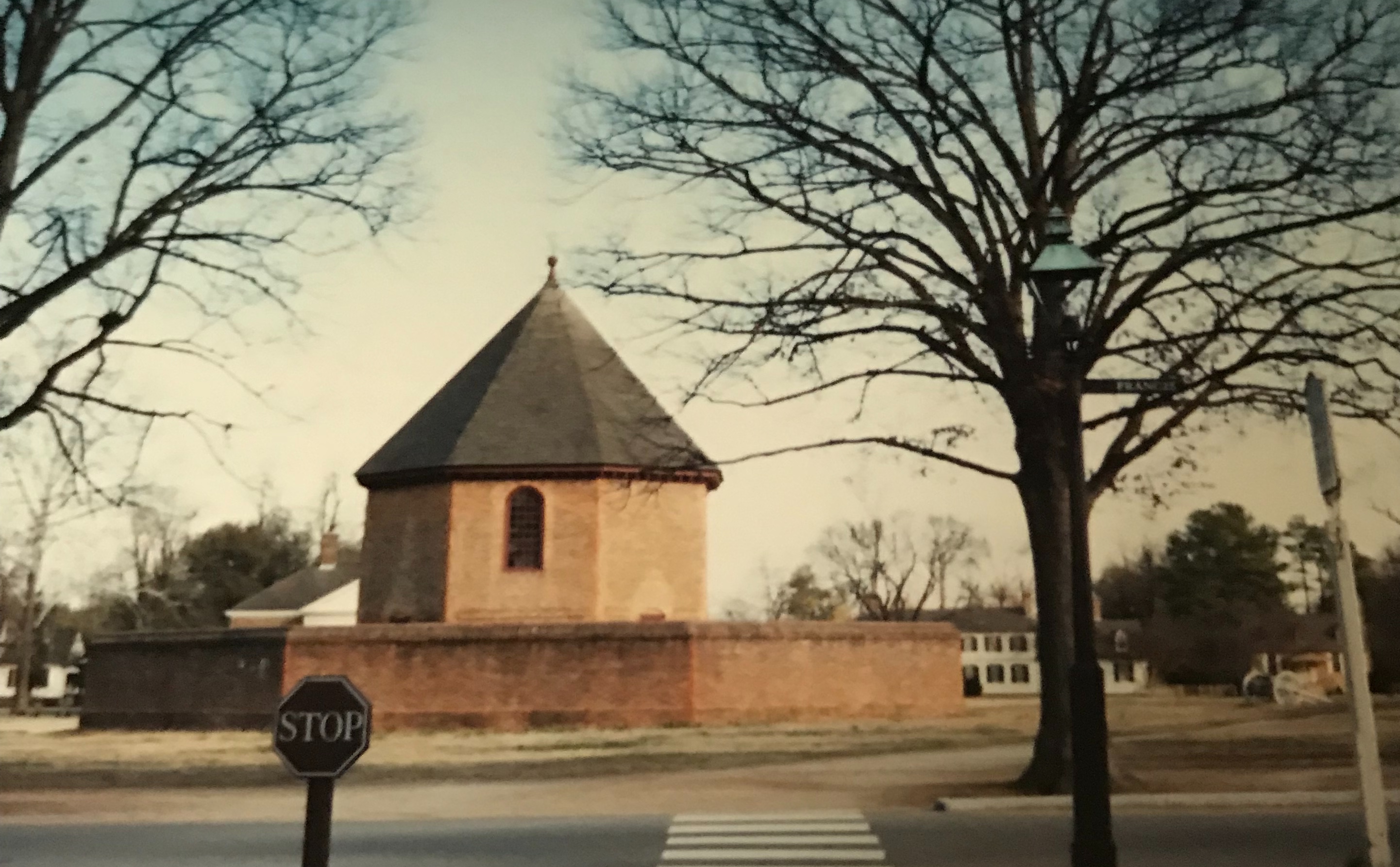
Bruton Parish Church
Bruton Parish Church was built in 1711. It hold services there, even to this day. The parish was important and considered equal in power to the court and The House of Burgesses. I walked inside. It is very lovely. I was sorry I didn’t get a chance to sit in on a service.
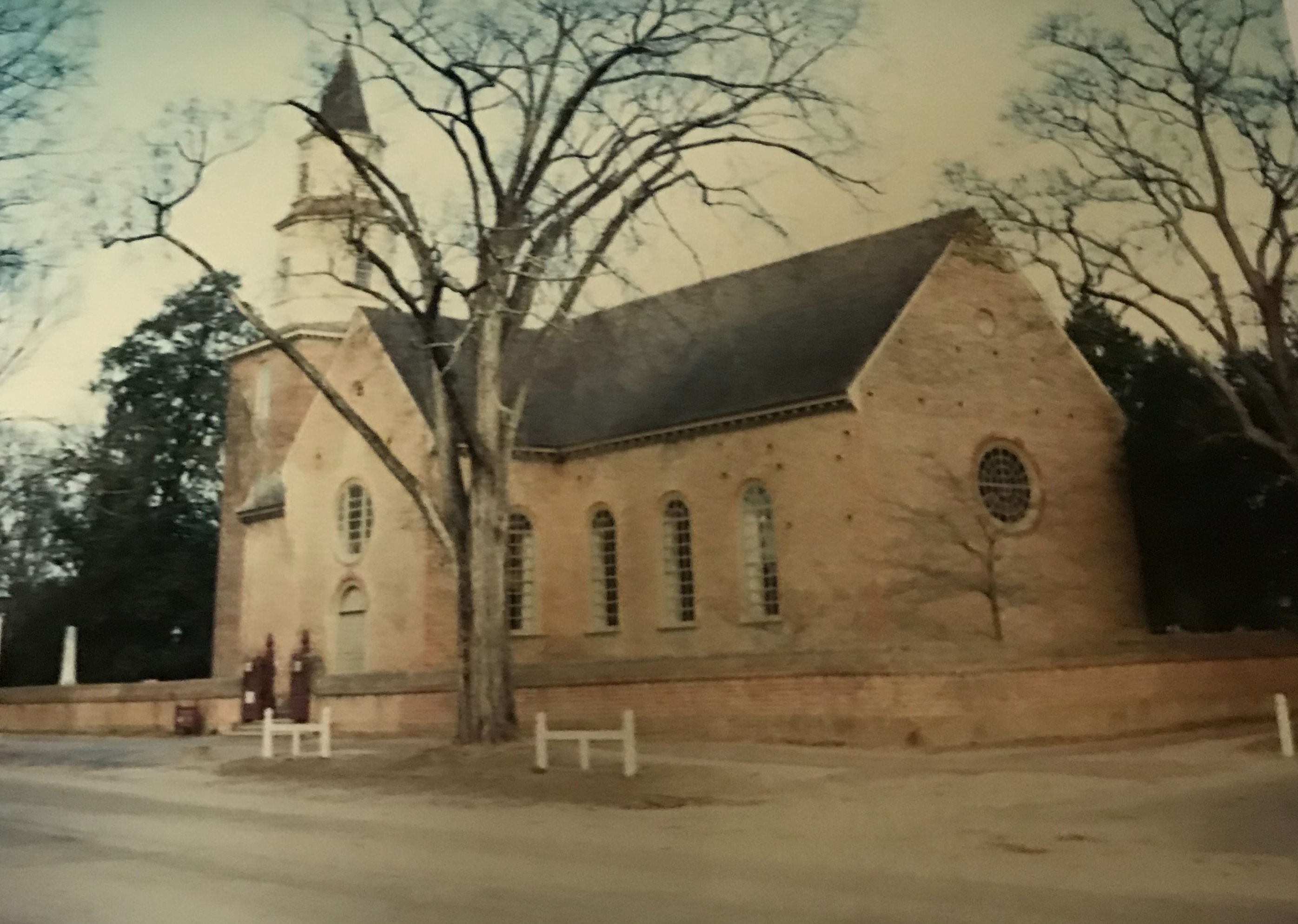
The Governors Palace
The Governor’s Palace was home to the Royal Governors of the Virginia Colony. Most noteworthy is that Thomas Jefferson and Patrick Henry also lived here as post-war governors. From 1699, Colonial Williamsburg served as the capital. The capital moved to Richmond in 1780. A fire destroyed the palace in 1781. At the time it was serving as a hospital for wounded soldiers. It was reconstructed in 1934. Although I have yet to take a walk inside, I can definitely say the outside is very beautiful. At night, I love the way it stands out, all lit, as a reminder of the way things were.
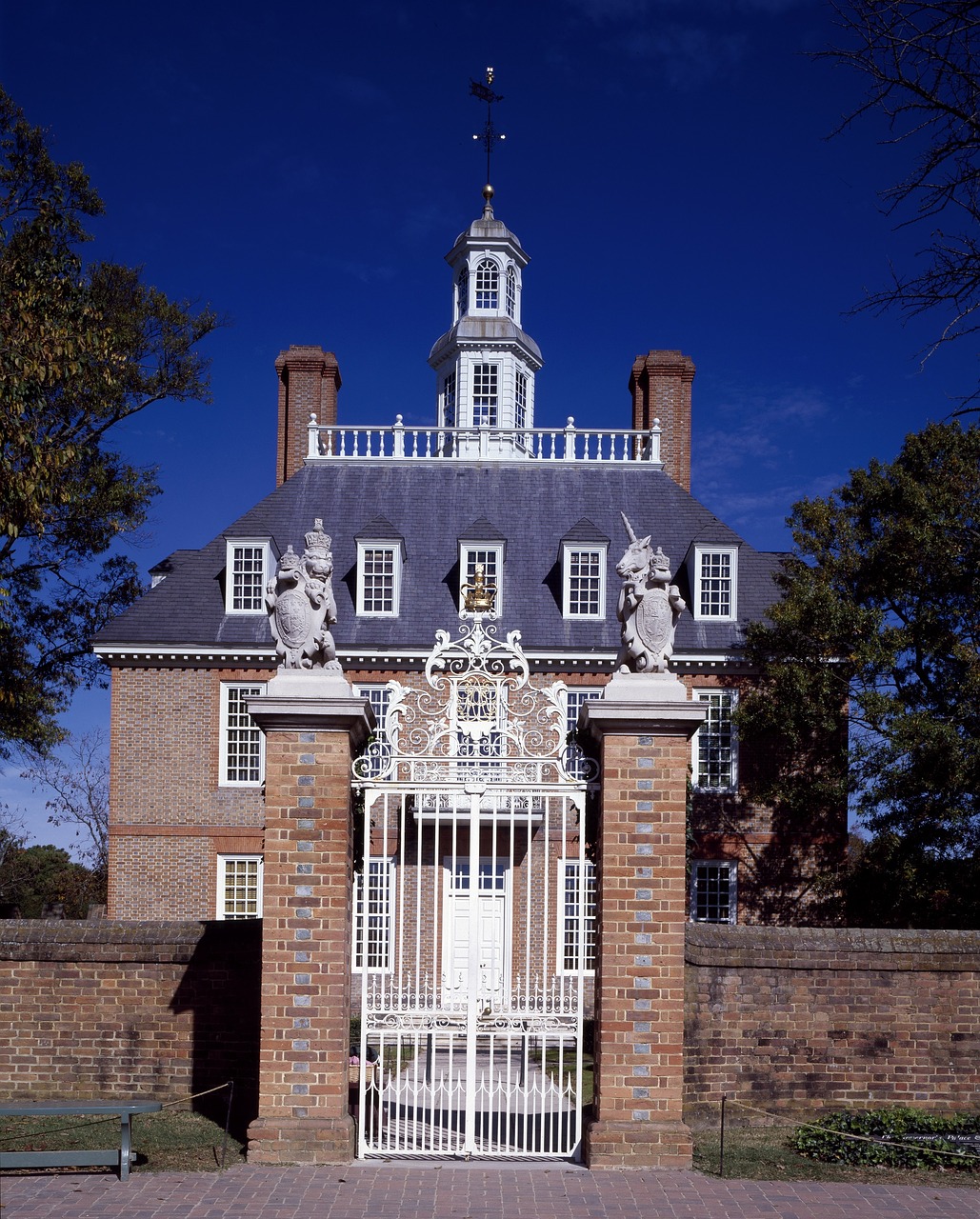
The Duke of Gloucester Street – The West End
Merchants Square is located adjacent to the historic area on The Duke of Gloucester Street. Here there are over 40 shops and restaurants. My favorite place is The Williamsburg Craft House. I bought some lovely things the last time I was there: several folk art gifts and a lovely tote bag that is so beautiful that I have yet to use it. I also love The Cheese Shop. They have over 200 imported and domestic cheeses , and a wine cellar of over 4000 bottles of wine. Furthermore, they make the best sandwiches and we enjoyed eating lunch here. The Peanut Shop is heaven. I love nuts. I bought several cans of Virginia peanuts to take home. The jumbo-sized peanuts are hand-cooked. They also sell specialty nuts and candy. The Williamsburg at Home Shop is a must. They have the most beautiful assortment of furnishings in 18th century style. Certainly, these shops will also please: Williams-Sonoma, The Shoe Attic, Scotland House, LTD, Wythe Candy, and the William and Mary Bookstore.
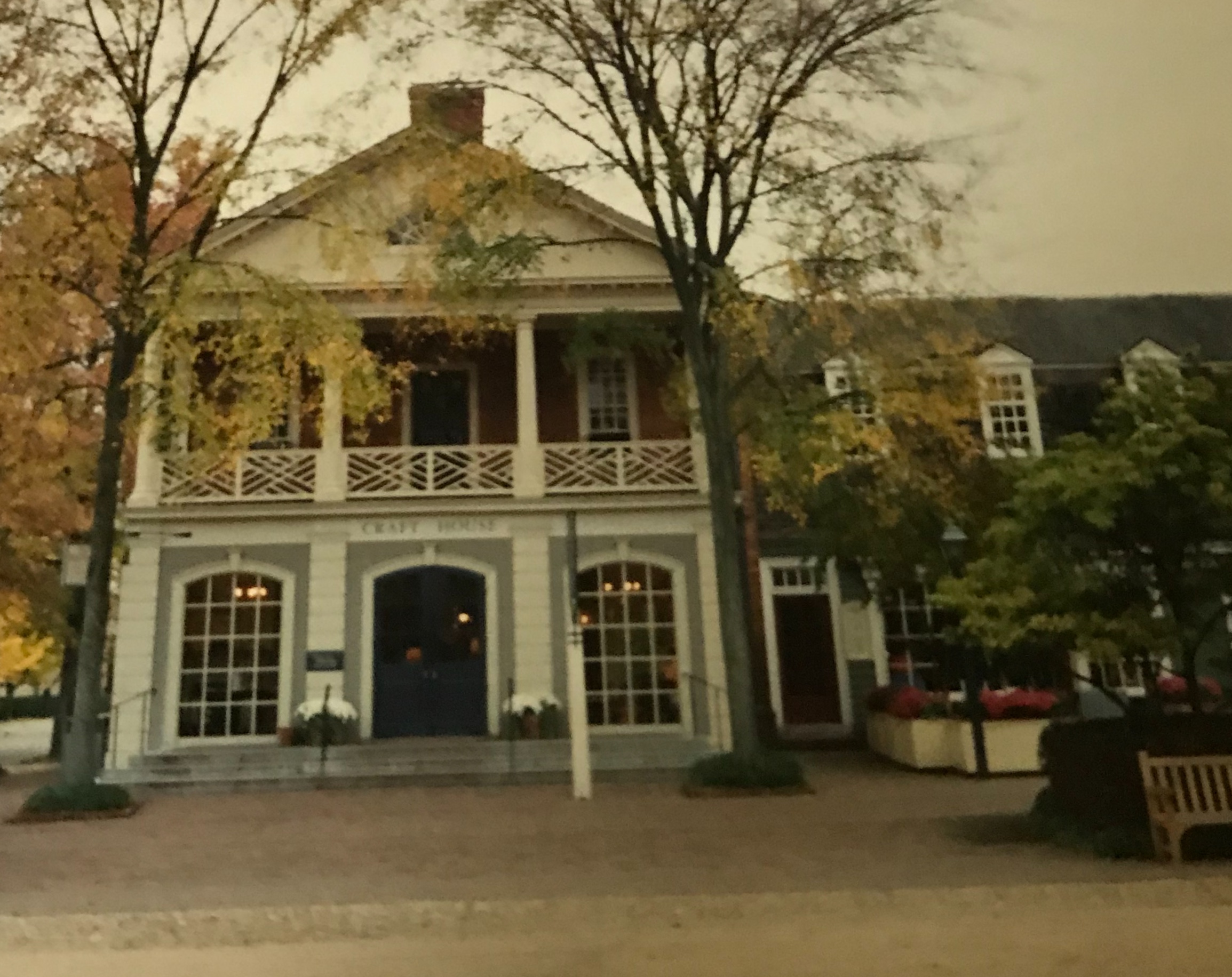
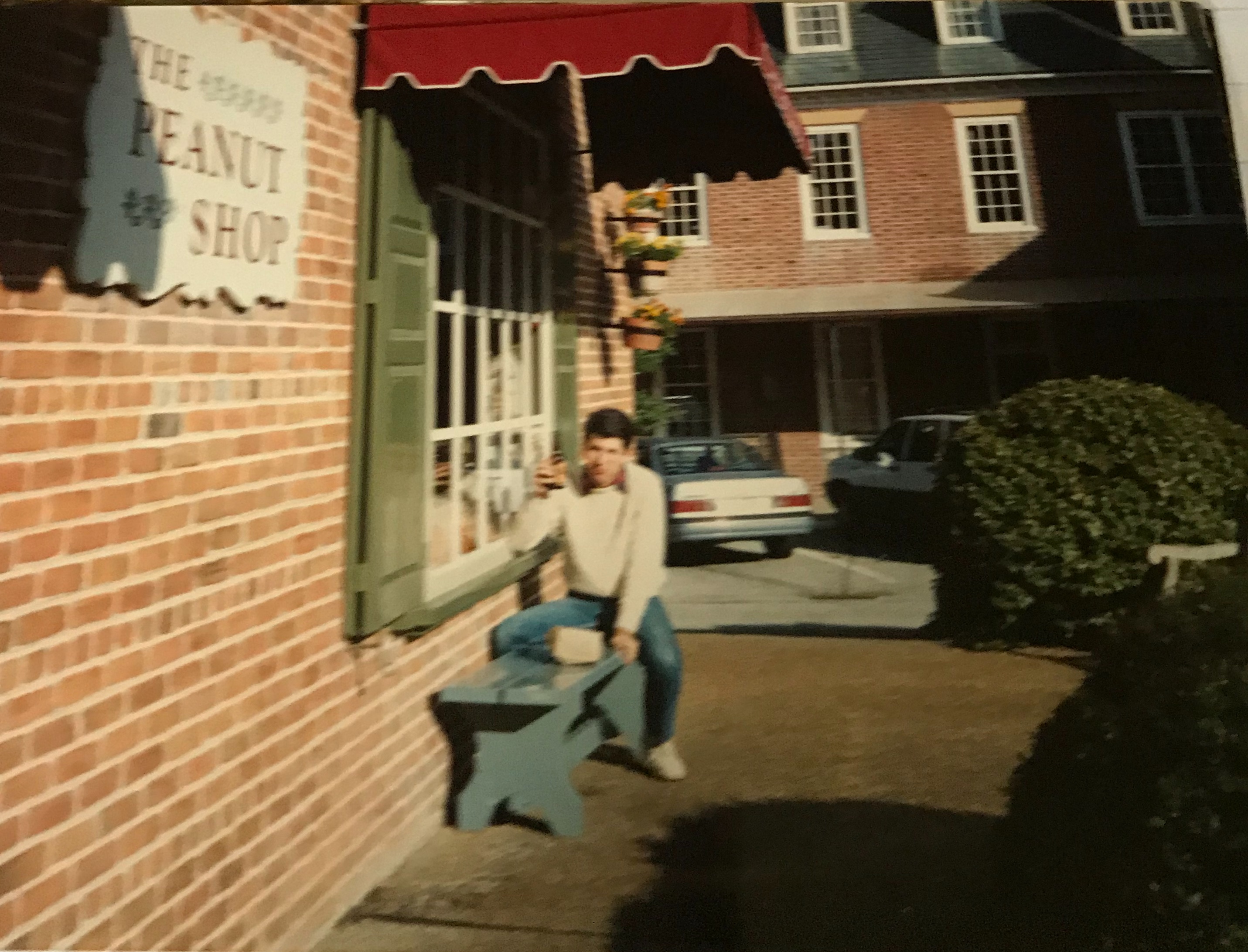
The College of William and Mary
Colonial Williamsburg, in addition to being a living historical museum, is a college town. The College of William and Mary is located at the far west end of The Duke of Gloucester Street and is exactly a straight mile from the Capitol on the east end to the campus on the west end. The college founded in 1693. It is the second oldest college in the nation, and even more, delivers a world-class education. Harvard University is the oldest. The College of William and Mary is a public research university. Some of the well-known graduates are Presidents Thomas Jefferson, James Monroe, and John Tyler, Also, 16 members of the Continental Congress and 4 signers of the Declaration of Independence also attended the college. I have been on campus and it is gorgeous. I would have loved to have done my studies here.
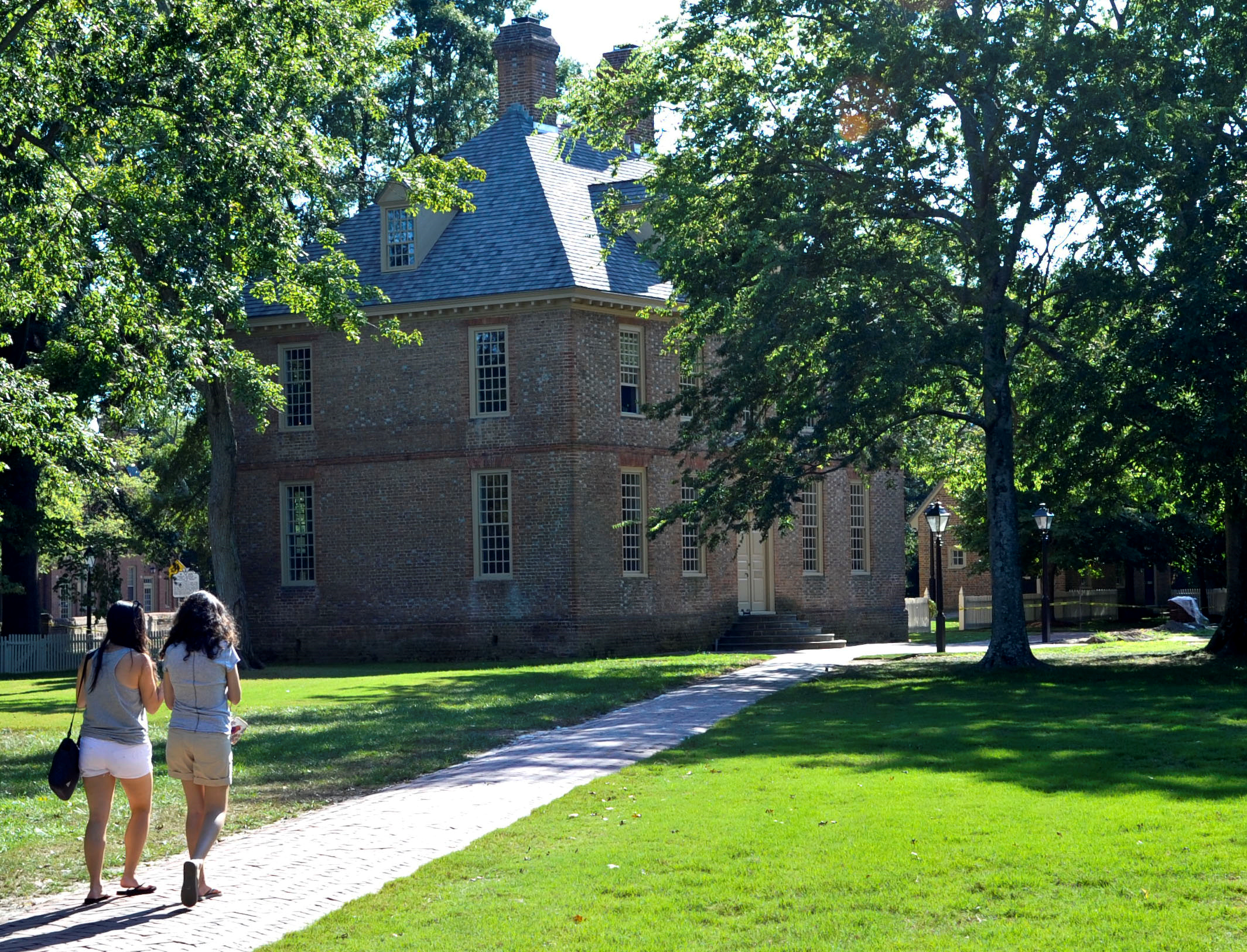
Colonial Homes
Many Burgesses lived in the houses lining The Duke of Gloucester and surrounding streets. These homes are restored and authentic to the historic time period. The good news is they are available for a stay, if you choose not to stay in one of the hotels. I have not done this, but I know you also get all the amenities that come with a hotel stay.
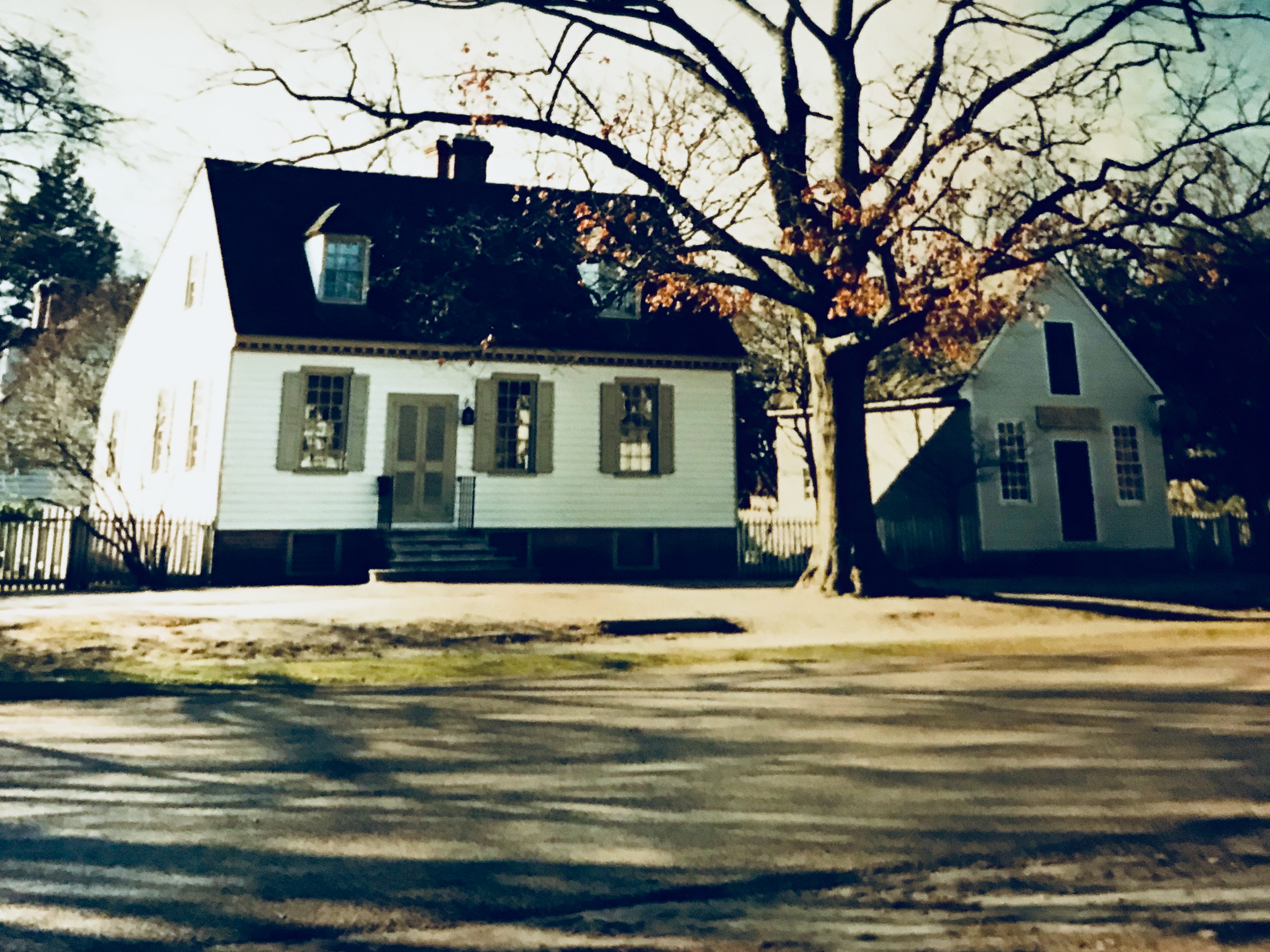
Colonial Williamsburg at Night
I love walking around Colonial Williamsburg at night, especially during the autumn season. There is a chill in the air and everything is clear and crisp. There is a rustling beneath your feet as you walk through the deserted streets and it feels so eerie. Consequently, one feels transported back in time. Walking the streets, you see brightly lit candles adorning each window, which was once a beacon for the weary traveler centuries ago. It brings to mind the warmth and comfort of family and home.
The Ghosts of Colonial Williamsburg
The last time I was here, I took a colonial ghost tour. It is well-known that Colonial Williamsburg has ghostly visits. The streets are haunted. We walked with a licensed tour guide through town with lanterns in hand. Colonial Williamsburg has 300 years of haunted history: epidemics, war, clashes between the colonists and Indians, and a lot of human suffering. Therefore, it is not surprising disturbed spirits have not made the transition after death. People regularly see phenomena on these tours that cannot be explained.
Some of the hot spots for sightings are The Public Hospital for Persons of Insane and Disordered Minds (what a frightening name!), The Public Gaol, (Jail), Bruton Parish Church, The Governors Palace and George Wythe’s home. In fact, as reported in USA Today, The Peyton Randolph House in Colonial Williamsburg is one of the most haunted buildings in the United States. The first mental hospital in the United States, The Public Hospital for Personal of Insane and Disordered Minds, was quite the place. You wouldn’t have wanted to have been a patient here. As a psychologist, I am shocked at the treatments used on these patients. On the tour, you will visit some of these places and hear stories that will chill you to the bone. I recommend the tour highly. In fact, paranormal investigators have actually documented some of these sightings and have deemed them real. Here is a short video on the Ghosts of Williamsburg. You will find it very entertaining.

Well Worth A Visit
I hope you will one day visit Colonial Willamsburg. You will be glad you did. It is one of my favorite places to visit in the United States. After visiting several times, I have an understanding of what it was like for my great-grandfathers to fight for our freedoms in The House of Burgesses and walk down The Duke of Gloucester Street. Certainly, I feel like it is my ancestral home as well. Colonial Williamsburg is in my heart and hopefully I will get the chance to visit again soon.
(Featured top image credit: Photo by C. Spencer van Gulick is available under the Creative Commons CCO 1.0 license on Pexels.com.


